Light sheet microscopy of the gerbil cochlea
- PMID: 32632959
- PMCID: PMC7775904
- DOI: 10.1002/cne.24977
Light sheet microscopy of the gerbil cochlea
Abstract
Light sheet fluorescence microscopy (LSFM) provides a rapid and complete three-dimensional image of the cochlea. The method retains anatomical relationships-on a micrometer scale-between internal structures such as hair cells, basilar membrane (BM), and modiolus with external surface structures such as the round and oval windows. Immunolabeled hair cells were used to visualize the spiraling BM in the intact cochlea without time intensive dissections or additional histological processing; yet material prepared for LSFM could be rehydrated, the BM dissected out and reimaged at higher resolution with the confocal microscope. In immersion-fixed material, details of the cochlear vasculature were seen throughout the cochlea. Hair cell counts (both inner and outer) as well as frequency maps of the BM were comparable to those obtained by other methods, but with the added dimension of depth. The material provided measures of angular, linear, and vector distance between characteristic frequency regions along the BM. Thus, LSFM provides a unique ability to rapidly image the entire cochlea in a manner applicable to model and interpret physiological results. Furthermore, the three-dimensional organization of the cochlea can be studied at the organ and cellular level with LSFM, and this same material can be taken to the confocal microscope for detailed analysis at the subcellular level.
Keywords: RRID: AB_10015251; RRID: AB_2534017; RRID:SCR_002465; RRID:SCR_003070; RRID:SCR_007370; auditory nerve; confocal microscopy; electrocochleography; inner hair cells; outer hair cells.
© 2020 Wiley Periodicals LLC.
Conflict of interest statement
Figures


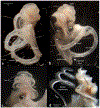
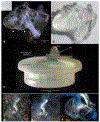
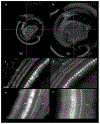

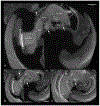
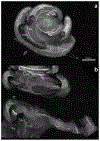


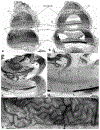

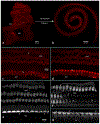
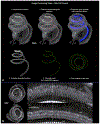

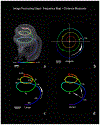

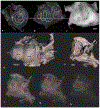
Similar articles
-
Imaging and cell count in cleared intact cochlea in the Mongolian gerbil using laser scanning confocal microscopy.Eur Ann Otorhinolaryngol Head Neck Dis. 2017 Sep;134(4):221-224. doi: 10.1016/j.anorl.2017.01.001. Epub 2017 Feb 9. Eur Ann Otorhinolaryngol Head Neck Dis. 2017. PMID: 28196606
-
Mouse retinal cell behaviour in space and time using light sheet fluorescence microscopy.Elife. 2020 Feb 19;9:e49779. doi: 10.7554/eLife.49779. Elife. 2020. PMID: 32073398 Free PMC article.
-
Altered cochlear innervation in developing and mature naked and Damaraland mole rats.J Comp Neurol. 2019 Oct 1;527(14):2302-2316. doi: 10.1002/cne.24682. Epub 2019 Mar 25. J Comp Neurol. 2019. PMID: 30861124 Free PMC article.
-
Light sheet microscopy and live imaging of plants.J Microsc. 2016 Aug;263(2):158-64. doi: 10.1111/jmi.12393. Epub 2016 Mar 28. J Microsc. 2016. PMID: 27019306 Review.
-
Three-dimensional image analysis of the mouse cochlea.Differentiation. 2016 Apr-Jun;91(4-5):104-8. doi: 10.1016/j.diff.2016.01.002. Epub 2016 Jan 16. Differentiation. 2016. PMID: 26786803 Review.
Cited by
-
Evaluation of the Efficacy of Dexamethasone-Eluting Electrode Array on the Post-Implant Cochlear Fibrotic Reaction by Three-Dimensional Immunofluorescence Analysis in Mongolian Gerbil Cochlea.J Clin Med. 2021 Jul 28;10(15):3315. doi: 10.3390/jcm10153315. J Clin Med. 2021. PMID: 34362099 Free PMC article.
-
Volumetric atlas of the rat inner ear from microCT and iDISCO+ cleared temporal bones.PeerJ. 2025 May 26;13:e19512. doi: 10.7717/peerj.19512. eCollection 2025. PeerJ. 2025. PMID: 40444285 Free PMC article.
-
In Situ 3D-Imaging of the Inner Ear Synapses with a Cochlear Implant.Life (Basel). 2021 Apr 1;11(4):301. doi: 10.3390/life11040301. Life (Basel). 2021. PMID: 33915846 Free PMC article.
-
Fusiform Cells in the Dorsal Cochlear Nucleus Change Intrinsic Electrophysiological Properties and Morphologically Remodel Their Basal Dendrites with Age.bioRxiv [Preprint]. 2025 Jul 21:2025.07.16.665173. doi: 10.1101/2025.07.16.665173. bioRxiv. 2025. PMID: 40777380 Free PMC article. Preprint.
-
Multiscale photonic imaging of the native and implanted cochlea.Proc Natl Acad Sci U S A. 2021 May 4;118(18):e2014472118. doi: 10.1073/pnas.2014472118. Proc Natl Acad Sci U S A. 2021. PMID: 33903231 Free PMC article.
References
Publication types
MeSH terms
Grants and funding
LinkOut - more resources
Full Text Sources

